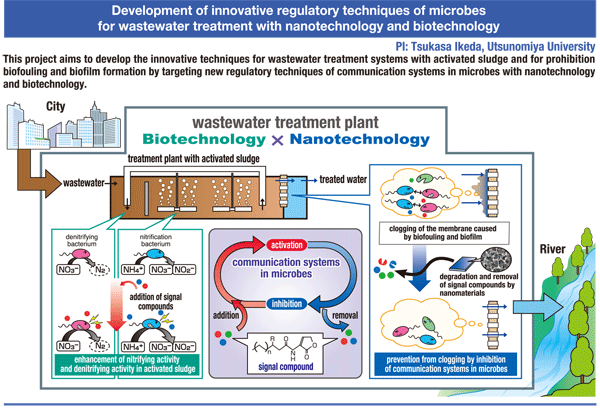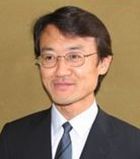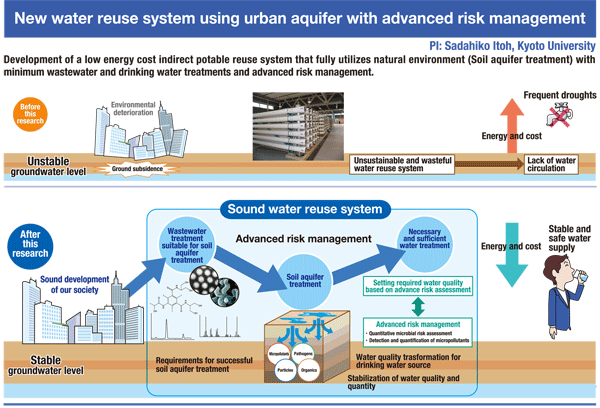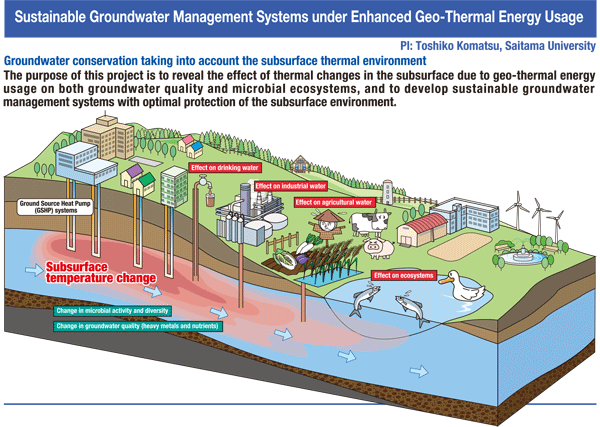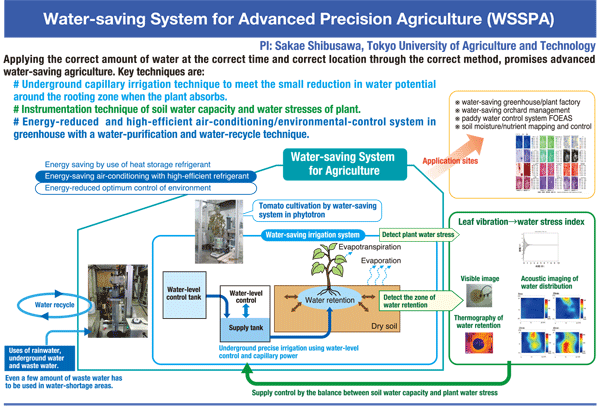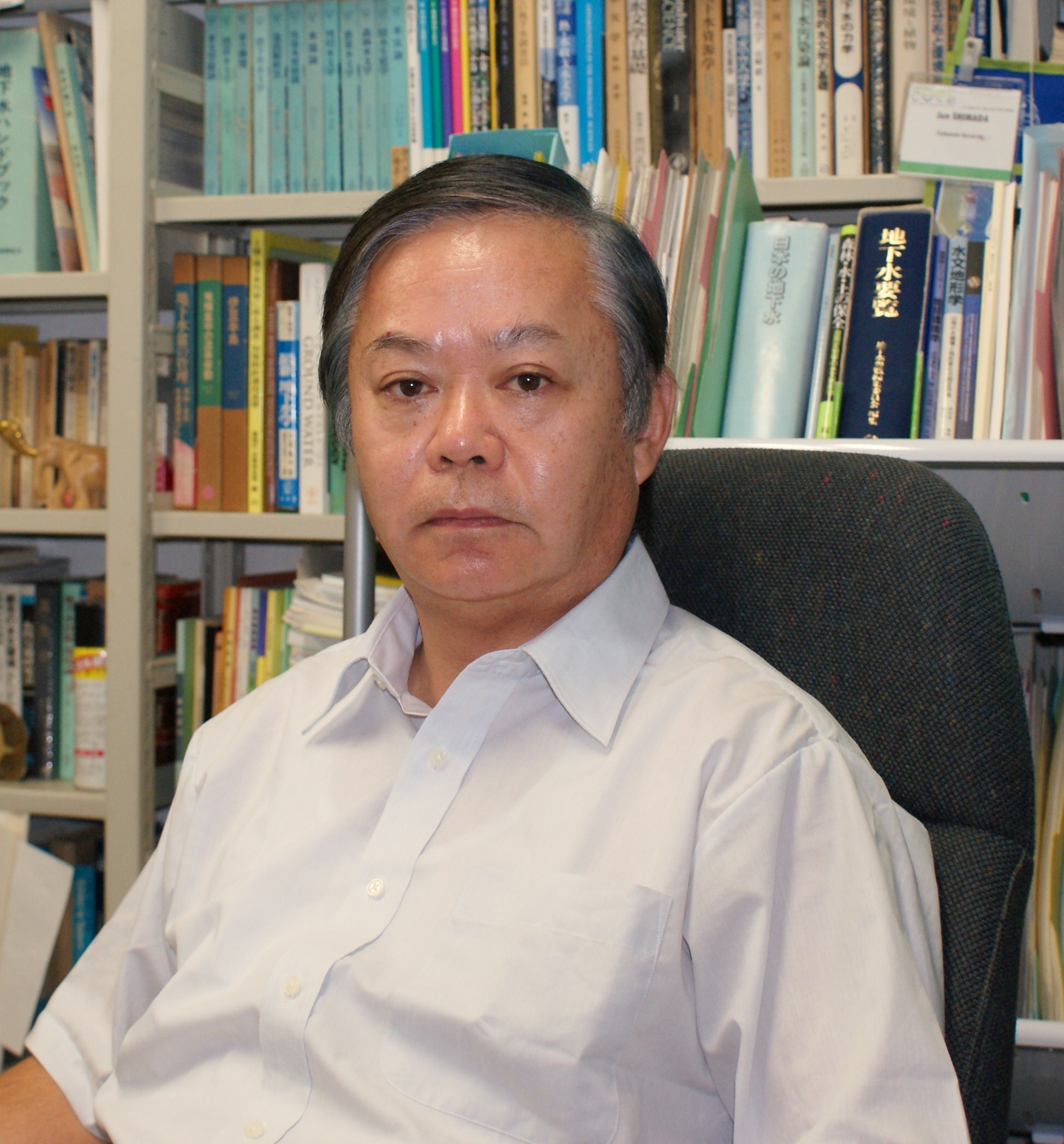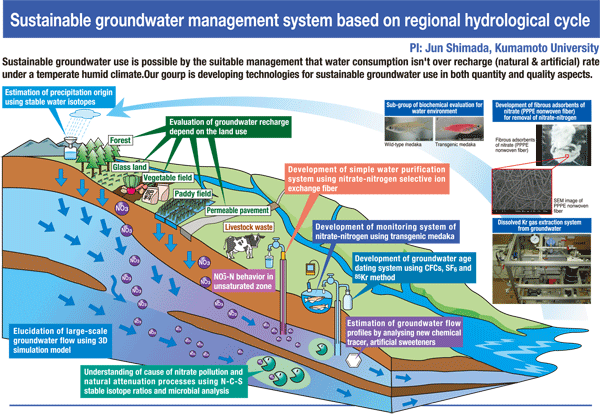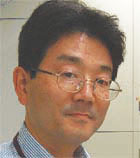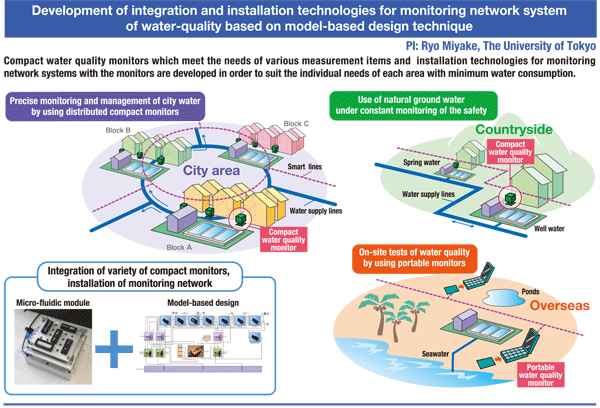| Tsukasa Ikeda | Development of Innovative Regulatory Techniques of Microbes for Wastewater Treatment with Nanotechnology and Biotechnology |
|---|---|
| Sadahiko Itoh | New Water Reuse System using UrbanAquifer with Advanced Risk Management |
| Toshiko Komatsu | Sustainable Groundwater Management Systems under Enhanced Geo-Thermal Energy Usage |
| Sakae Shibusawa | Water-saving System for Advanced Precision Agriculture (WSSPA) |
| Jun Shimada | Sustainable groundwater management system based on regional hydrological cycle |
| Ryo Miyake | Development of integration and installation technologies for monitoring network system of water-quality based on model-based design technique |
Development of Innovative Regulatory Techniques of Microbes for Wastewater Treatment with Nanotechnology and Biotechnology
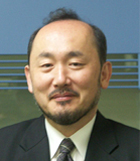
Research Director
- Tsukasa Ikeda
- (Executive Director/Vice President, Utsunomiya University)
Co-Investigators
- Norihiro Kato
- (Professor, Utsunomiya University)
- Nobuhiko Nomura
- (Professor, Tsukuba University)
Wastewater treatment techniques are very important for a sustainable water supply. The main treatment process is the activated sludge system, a highly developed process for wastewater treatment; however, the system can still be improved from a microbiological control standpoint because activated sludge is a type of microbial flora.
Biofouling and biofilm formation are other major problems for water supplies, drainage systems, and wastewater treatment systems. Recently a relation has been proved between the formation of a biofilm and the microbial communication system.
It has been found that microbes can communicate with each other with certain types of signal compounds. Microbes regulate their activities with these communication systems. We have found such microbial communications in many environmental samples, such as the intestinal flora of fish, the symbiotic flora of plants, and the microbial flora in activated sludge as well as in biofilm. We have also developed microbial communication system control techniques, and methods to evaluate and diagnose microbes.
This project aims to develop innovative techniques for wastewater treatment with nanotechnology and biotechnology. For this purpose, new techniques to regulate microbial communication systems will be developed using nanomaterials. These technologies should not only improve wastewater treatment systems that use activated sludge, but also prohibit biofouling and biofilm formation.


